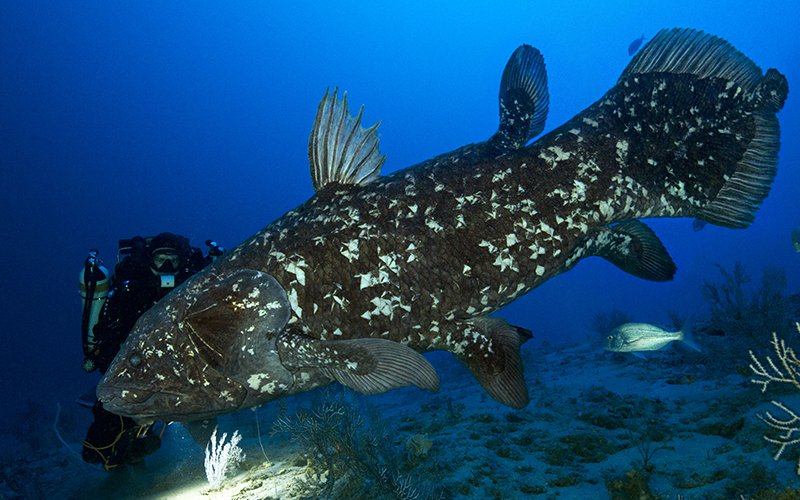
During the twentieth century, scientists of the time discovered that the coelacanth exists: so this "living fossil" should be over 400 million year old!
It was thought to have disappeared with the dinosaurs, but in 1938 it was discovered that it had survived and that a few hundred species were still living in the Comoros Archipelago, almost identical to their Devonian ancestors.
Since then, it has been the focus of interest of many enthusiastic scientists. Local populations, for whom this fish had been familiar for a long time, although they catch it very rarely, were first astonished by this sudden interest, but later on they transmitted their observations each time they caught one.
In the past 70 years, 300 specimens have therefore been officially classified.
With 15 whole individuals and over 300 anatomic parts coming from 26 different animals, Paris Natural history Museum possess today the largest collection of coelacanths worldwide.
Océanopolis has decided to dedicate an exhibition to this fish. Collaborative work with Paris Natural History National Museum, Pierre and Marie Curie University and Laurent Ballesta/Andromède Océanologie, have made it possible to present the public an update of all the scientific data gathered today about the coelacanth.
Client:
Océanopolis
COLUMBIA RIVER:
Conception
Exhibition arrangement
Associated Partners:
Muséum d’Histoire naturelle de Paris Université Pierre et Marie
Andromède Océanologie
Discovering the Coelacanth